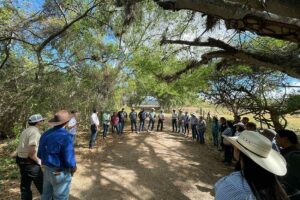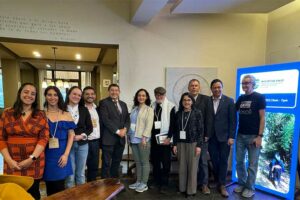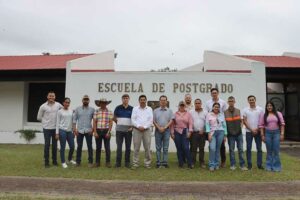Sharing experiences in the use of food and nutrition security data
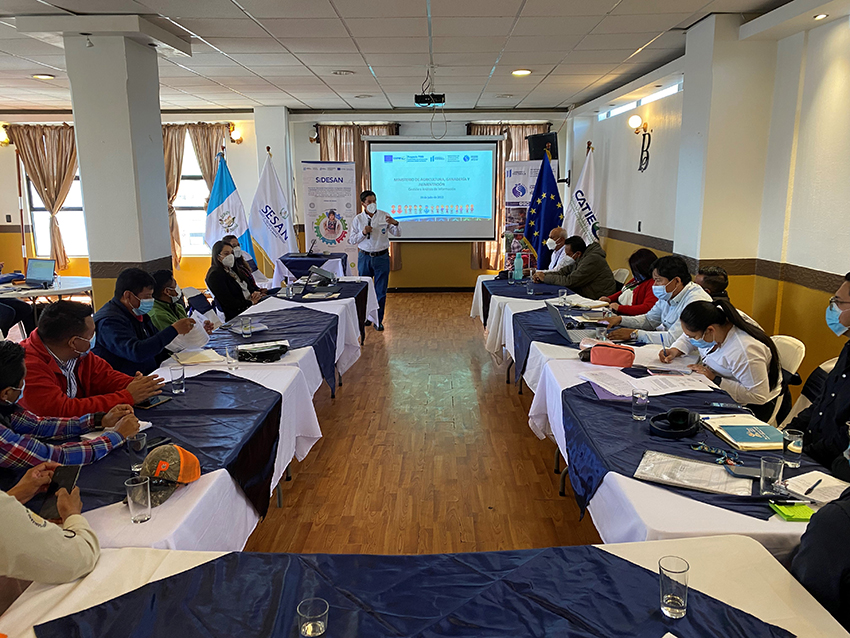
- Officials from the department of Totonicapán in Guatemala share their experience with members of CODESAN in Quiché, with support from the National Nutrition Information Platform (PiNN) project.
August 1, 2022. With the objective of sharing lessons learned and knowledge acquired on the implementation processes of the Food and Nutrition Security Information Systems, the Departmental Commission for Food and Nutrition Security (CODESAN, its Spanish acronym) of Totonicapán, in Guatemala, held an exchange of experiences with the members of CODESAN of the department of Quiché. The meeting was organized by the departmental delegates of the Secretariat for Food Security and Nutrition (SESAN, its Spanish acronym) of Totonicapán and Quiché, with the support of CATIE (Tropical Agricultural Research and Higher Education Center) and the Delegation of the European Union in Guatemala.
Officials from the Ministry of Public Health and Social Assistance (MSPAS, its Spanish acronym), the Ministry of Education (MINEDUC, its Spanish acronym), the Ministry of Agriculture, Livestock and Food (MAGA, its Spanish acronym), the Ministry of Social Development (MIDES, its Spanish acronym), SESAN, the Secretariat of Planning and Programming (SEGPLAN, its Spanish acronym) and the National Coordinator for Disaster Reduction (CONRED, its Spanish acronym) attended.
CODESAN is chaired by the departmental governors, which is why Otto Ervin Macz, governor of the department of Quiché, was present. He stated that, although many actions have been carried out in the area of food security in the department of Quiché, it is important to know the different activities that have been carried out in Totonicapán, especially with the Departmental Information Systems (SIDESAN) and the Municipal (SIMSAN) for Food and Nutritional Security. He thanked all the participating institutions for the opportunity and time.
Martha María Pacay, advocacy and public policy specialist of the National Information Platform on Nutrition (PiNN) project, presented an overview and timeline of the main processes and activities coordinated and implemented in Totonicapán. Pacay added that the project, in close coordination with SESAN, has strengthened the installed capacities of each of the government institutions in charge of food and nutrition security; she also highlighted that there have been advances, as well as difficulties and challenges in terms of data management, which has contributed to improve the systems.
The representative of the health area of Quiché, Roberto Mazariegos, member of the team of nutritionists, expressed his interest in the methodological knowledge and the process of implementation of nutrition information systems in Totonicapán, in order to improve the use of data and analysis of the information generated through the Management Health Information System (SIGSA, its Spanish acronym) of MSPAS to assertively reinforce the comprehensive care of children with some form of malnutrition.
Mario de León, rural extension coordinator of MAGA Totonicapán, shared his experience on how they managed and analyzed the information with the support of the PiNN project, and said that the actions carried out in coordination with the PiNN project could be improved, so the responsibility of MAGA officials has been focused on providing information for the systems.
Wilfredo Bac, MIDES departmental coordinator, pointed out that the ministry's mission is to provide social protection through conditional transfers, and that it is the government's executing arm in coordination with MSPAS and SESAN, which is why the information systems (SIDESAN and SIMSAN) have facilitated data matching.
Rayza Alina Velásquez, SESAN's Quiché departmental delegate, thanked the PiNN project, CATIE and the European Union for providing a space for the exchange of experiences and support for the creation of the systems, which will strengthen actions and facilitate inter-institutional coordination.
Finally, Esaú Guerra, SESAN's departmental delegate for Totonicapán, closed the activity by indicating that this exchange of best practices on the use of the systems was useful for both Totonicapán and Quiché officials, thus fulfilling the objective of the activity. At the same time, he thanked the departmental governor and the officials for their interest and thanked the PiNN project team for facilitating these spaces that contribute to the improvement of the institutional work.
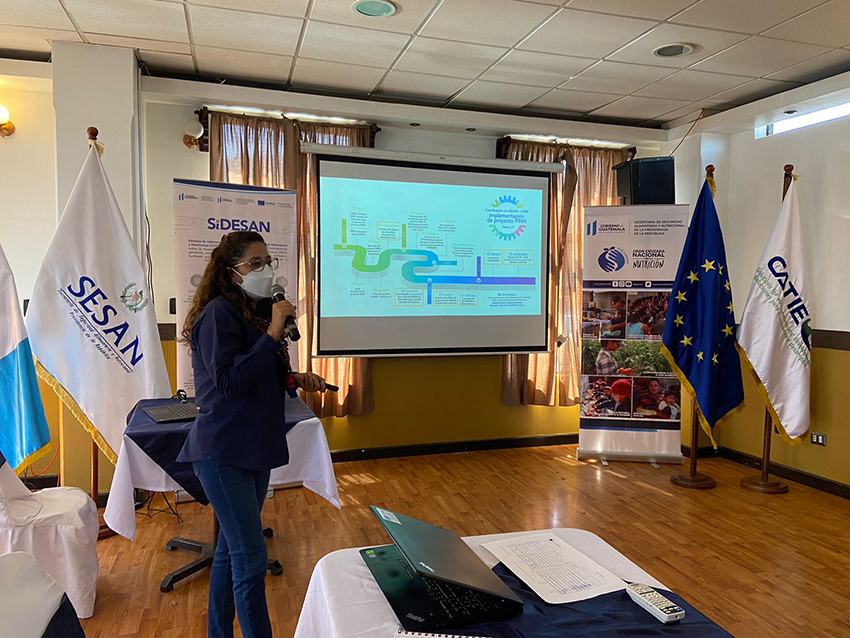
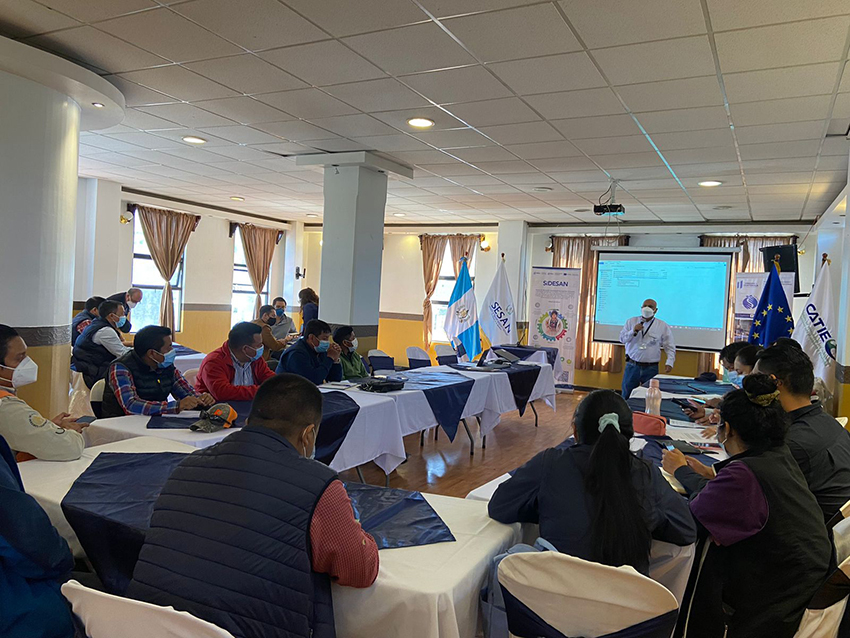
More information:
Martha María Pacay
Advocacy and public policy specialist
Proyecto PiNN/CATIE/UE

